|
Animal Neuro-myofascial Release Technique, also known as ANMR, is a body alignment technique for both small and large animals. It utilizes a specialized tool that enables the practitioner to put motion into the soft tissues surrounding and adjacent to the vertebral column and other joints. This creates a combination of neurological input and soft tissue releases that allows the animal's body to "reset" itself leading to an improvement in posture, range of motion and gait. Is this a Chiropractic Technique?No, even though a tool is used that is similar to the Activator tool (a tool used in human chiropractic to perform Activator technique), this is not considered to be a chiropractic technique. Rather than using the tool to move bones, the tool is used to release soft tissues and provide neurological input through quick impulses. This technique is approved through the National Certification Board of Therapeutic Massage and Bodywork and is considered to be a soft tissue technique. Who can Perform this Technique?This course and certification is available to anyone who is already certified in animal massage therapy or is a licensed Veterinarian, Veterinary Technician or Doctor of Chiropractic. Animal massage therapists find this technique to be a great addition to their practice, allowing them to address body mis-alignments quicker and more accurately than can be done with massage therapy alone. Veterinarians have began adding this technique to their practice to create additional revenue and offer clients with a non-medication, non-surgical treatment option for animals suffering from musculoskeletal issues. Many Doctors of Chiropractic have enjoyed adding ANMR to their practice to provide animals with effective and safe body alignment. State animal massage laws must be followed when practicing ANMR. What Conditions can Benefit from ANMR?
Ready to Learn More?
0 Comments
There are some Reiki professionals who frown upon distance attunements because they feel as though the Master is not able to transfer their energy efficiently to the student and therefore the student will not be able to adequately perform healing Reiki sessions. There are many different ways that Reiki Masters who teach online courses are performing distance attunements and some of those methods are more effective than others. In this article, I will discuss some of the distance attunements that are currently being performed and which method I feel to be the most effective. Non-specific, pre-filmed or pre-performed attunementsWhen reading negative articles or comments about distance Reiki attunements, this is normally the form of attunement they are referring to. In this scenario, the Reiki Master performs an attunement at the time they put together their online course, CD course or written course and send that attunement out into the universe so that their students can pick up on it when they are ready. Obviously this type of attunement is very non-specific and while I can not say that it is completely un-effective, I do personally believe that it is one of the least effective methods. Non-specific group attunementsDuring these distance attunements, the Reiki Master will normally pick a specific day and time that they perform their attunements every week. For example, it could be every Monday at 6 pm. The students who choose to tune in to the attunements at that time can do so. There is not direct communication between the Master and student. While these are not completely ineffective (many students experience waves of energy and other sensations during the attunement), I personally feel as though this is not the most effective way to perform a distant attunement. Specific, individual, scheduled attunementsThis is the method of distance attunement that I utilize and in my opinion it is the most effective way to perform a Reiki distance attunement. When a student is ready to schedule their attunement, they contact me and we choose a time and day that works for both of us. Immediately before the attunement begins, I contact the student to make sure they are ready and I also contact them immediately following the attunement to let them know it is completed. Similar to performing a Reiki distance healing session, I utilize the distance symbol (Hon Sha Ze Sho Nen) to project my energy to the student. I focus on their name and location to better hone in on them. The student is in a relaxed, meditative state and receptive and open to the energy I am sending. I follow a specific attunement protocol which varies depending on the level of attunement I am performing. I also utilize crystals to enhance the effects of the sessions (the crystals are chosen based on the student I am attuning). This is a very specific process, which in my opinion (which is based on the feedback I receive from students along with my intuition) is the most effective way to perform a distance Reiki attunement. Is there a right way?Some Reiki Masters will say yes, but in my opinion there is not a right or wrong way to perform a Reiki attunement. Every student processes energy differently and will therefore have a different experience. There is not a right or wrong way to experience a Reiki attunement and the effectiveness of an attunement will always be subjective in nature. My personal belief is that if the Master and student both have the same intent, are focused on what they want to accomplish during the attunement and are open and positive, the desired results will happen. What do you think? I'm interested in hearing your thoughts and experiences in the comments below.The Reiki technique was developed in Japan by Mikao Usui. This is a healing energy technique that utilizes life energy force that is transmitted from the practitioners hands. This technique was originally developed for people, but has been used frequently on animals as well. Dr. Angel is a trained Reiki Master she developed an animal healing symbol that she believes helps intensify the Reiki energy when working on animals. Reiki energy can help an animal decrease pain, provide them emotion relief and allow their bodies to naturally heal themselves. While Reiki treatments do not replace veterinary medicine or other forms of animal bodywork, it can be very beneficial in working with all types of animals including those who do not want to be touched or are afraid of human contact.
Those who practice Levels II and III Reiki are able to send Reiki energy over distances, allowing them to work on animals who are not immediately in front of them. In Dr. Angel's online course, she teaches students how to perform Reiki healing on animals and provides them with the necessary attunements so that life energy can begin flowing freely through them. Only those who have undergone Reiki attunements are able to perform Reiki sessions. How Does Our Course Differ From Traditional Reiki Courses? While traditional Reiki courses are focused on human healing, our course is specifically designed for animal healing. The course covers equine, feline and canine behavior and handling, to better help our practitioners read an animal's body language. It also teaches our students an Animal Reiki symbol that enhances the healing energy when working on animals. Those who are human Reiki practitioners can benefit from taking this course as well as those who have never completed a Reiki course. To learn more about Dr. Angel's course, click here. If you perform animal massage and bodywork, you have probably wondered about carrying liability insurance to cover any issues that may arise during a session. Your next questions is likely, how do you go about becoming insured? How to Obtain It: To obtain liability insurance, the best option is to join an animal massage association such as the International Association of Animal Massage and Bodywork. They provide their members with malpractice insurance options. In order to qualify to join IAAMB, you must be able to show that you have completed at least 100 hours in Animal Massage courses. Our massage certification courses are approved through IAAMB and will allow you to become a member.
How Much Does it Cost? A typical policy in the USA is only $175 per year! The low risk involved in animal massage allows the insurance costs to stay low. Compare this to a human surgeon who spends an average of $15,000 per year on malpractice insurance. The level of risk will dictate the cost. You can now add techniques such as kinesiology taping, craniosacral therapy and animal neuro-myofascial release (AMNR) technique to your practice without having to travel! Dr. Angelique Barbara offers these online continuing education courses to animal bodyworkers through a web course host that allows the student to start the course whenever it is convenient to them and to complete it at their own pace. “Our courses never expire”, Dr. Barbara says, “allowing our students to take as much time as needed to complete them”. “The other great benefit”, continues Dr. Barbara, “is that students can log back in to the course at any point in the future to review the material and see what new material has been added”. You may be wondering how one can adequately learn these techniques through an online format? Dr. Barbara explains that she has developed a system of learning that is highly effective. This system consists of watching lectures, reading information, watching step by step demonstrative videos, practicing the techniques and then re-watching the demo videos. Students have their technique applications assessed through video submissions and case studies. “The great thing about taking one of our online courses is that you can watch the videos as many times as you need to and can practice the techniques while watching the videos off a tablet or your phone”, says Dr. Barbara. “I have had students who have attended one of my in person seminars and then later took one of my online courses, state that they learned more through the online course because they were able to review the material, while they had a tendency to forget things from the in person course”. Dr. Barbara has been teaching animal bodywork courses for over ten years, but just launched her online courses several years ago. Since that time she has acquired students in over 30 countries and continues to receive positive feedback. Maria Sorgie, an equine sports massage therapist who took Dr. Barbara’s equine kinesiology taping certification course claims that it was the best thing she ever invested in. Dr. Barbara says that the thing she loves the most about teaching online courses is that she is able to spread her knowledge vast distances and has the opportunity to interact with people who would not have been able to travel to her for a seminar. Craniosacral therapy is a bodywork technique that addresses the craniosacral rhythm which is found in all animals. This rhythm is similar to the animal's heartbeat, but is a result of the pumping of Cerebral Spinal Fluid (CSF) rather than blood through the heart. The CSF nourishes the Central Nervous System (CNS) and changes in its flow can directly impact it. CSF flows from the skull of the animal (cranium), down the spinal cord to the sacrum (hence the name craniosacral). Craniosacral therapists can enhance and correct the flow of CSF through specific techniques and protocols. HistoryDr. William Sutherland, an osteopathic physician who was fascinated by the structure and function of the bones of skull, founded Cranial Osteopathy in the early 20th century. He initially experimented on himself and found that he could influence his cranial rhythm (as well as cause or relieve illness) by putting specific pressure on certain cranial bones. In the 1970's Dr. John Upledger, another osteopathic physician, expanded on Dr. Sutherland's work after he became interested in cranial rhythm when he saw it first hand while assisting in an operation and noticing rhythmic movement of the patient's spinal cord. Dr. Upledger was able to develop techniques to directly influence this rhythm and had the opportunity to research the craniosacral system while working at Michigan State University. He later created courses to teach others how to perform craniosacral technique and today the technique is practiced by thousands of practitioners all over the world. Craniosacral Technique for AnimalsNumerous practitioners, including myself, began to practice the craniosacral techniques on animals and quickly realized that they can benefit from it just as much as people can. Animals also have a craniosacral rhythm that can become altered due to injuries and stresses. Animals who receive regular bodywork (massage and chiropractic) and have pattern of re-occuring issues (won't hold an adjustment, end up tight in the same areas shortly following a massage) can benefit from a combination of craniosacral therapy and other forms of bodywork. The craniosacral therapy will allow the animal to "unwind" the kinks and twists in their fascia that is caused from repeated stresses allowing their bodies to stay in alignment following a chiropractic adjustment or allowing the muscles and other soft tissues to remain less restricted longer following a massage. Cranial Bone Alignment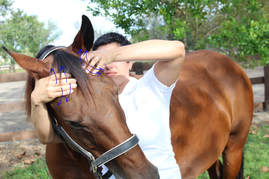 Similar to humans, animals have multiple bones that make up their skull. These bones are attached by sutures, which are a specialized joint that allow for very subtle movements so the bones can expand and contract with the CSF pumping. These bones can become jammed or misaligned. This can be a result of birthing (the animal's skull can become compressed in the birth canal) or it can be the result of injury. Cranial bone alignment techniques allow the practitioner to make subtle movements in these bones which allow them to move more freely. This can help with anything from headaches and lack of concentration to decreased proprioception and attitude problems. Learning More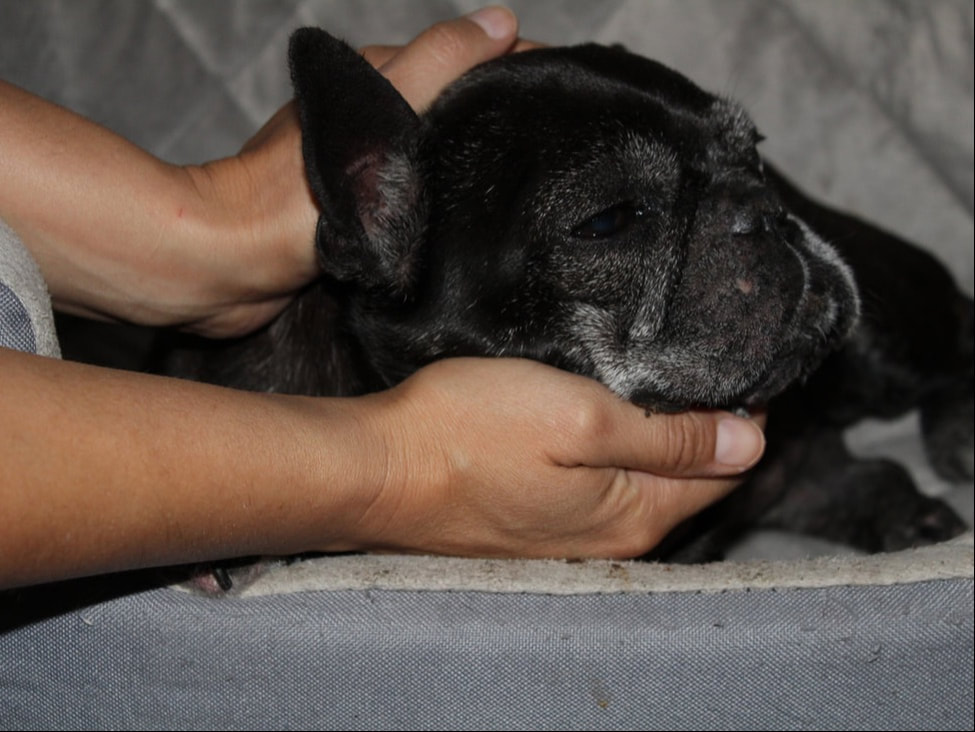 Practitioners who would like to add craniosacral therapy to their animal bodywork practice are welcome to enroll in our online certification course. This course covers a 10 step CS protocol, advanced techniques, cranial bone alignments and an energy healing technique. |
AuthorDr. Angelique Barbara is the founder of Angel's Animals LLC, a company that has developed online animal bodywork courses for both owners and professionals. Dr. Barbara's unique teaching style along with the dynamic layout of the courses allows people of different educational backgrounds from all over the world to benefit from her knowledge. Archives
May 2024
Categories
All
|

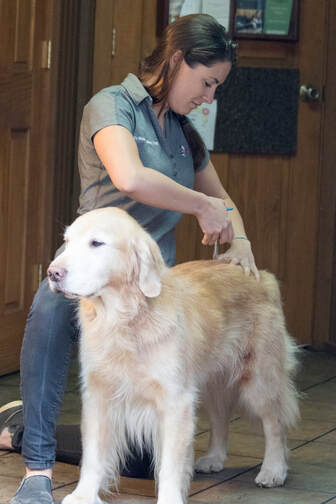
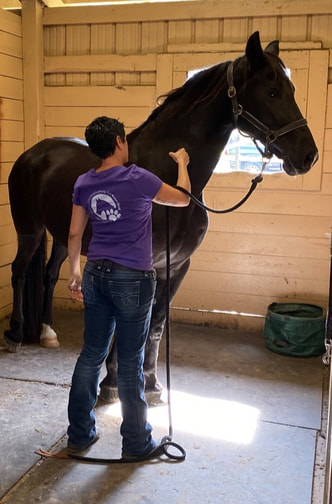
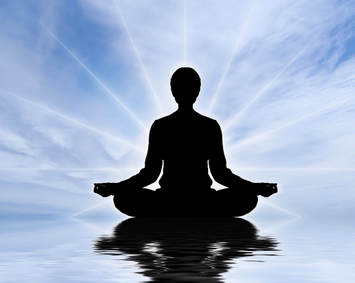
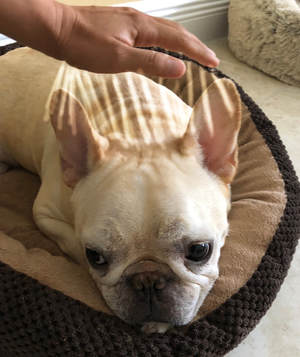
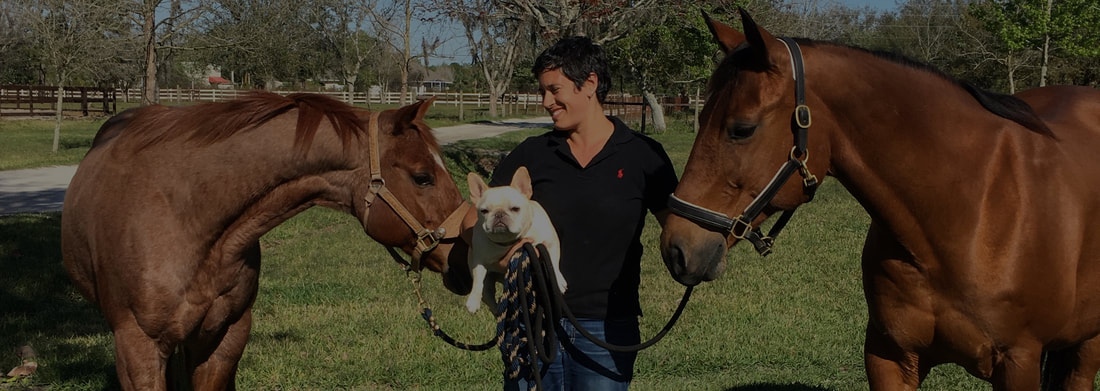
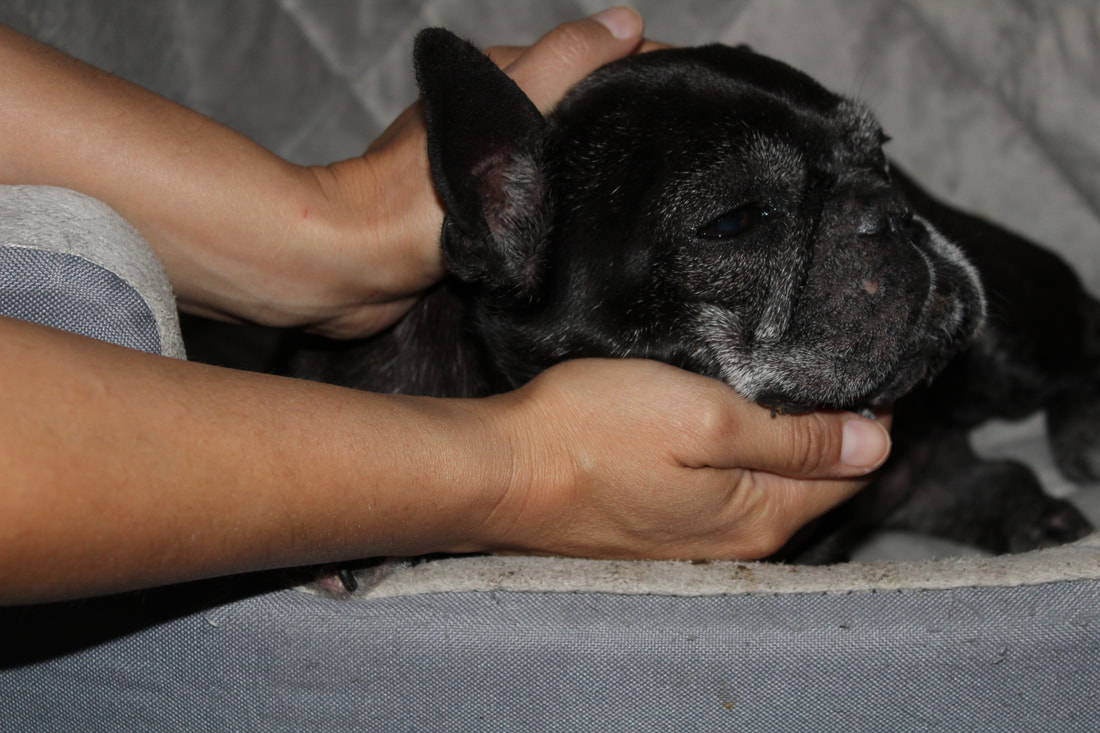
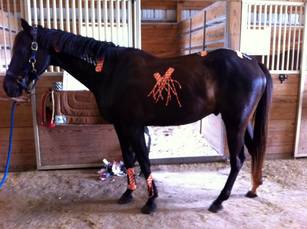
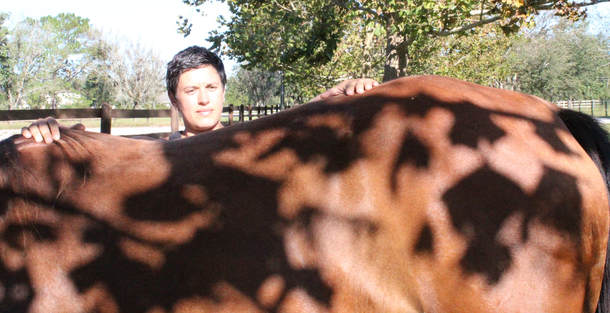
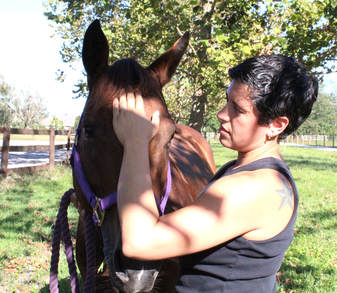
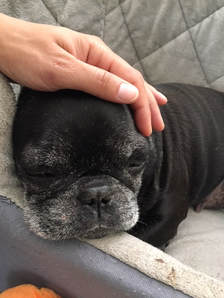
 RSS Feed
RSS Feed